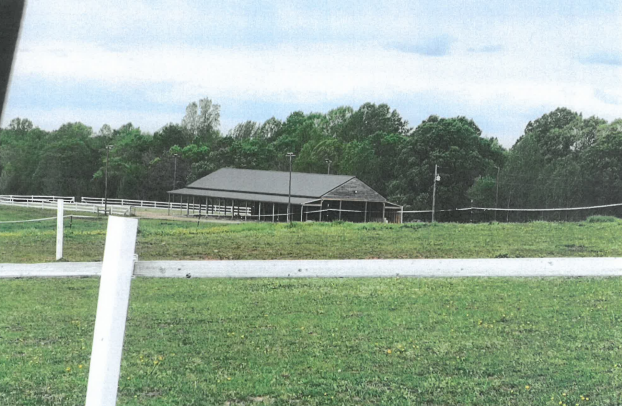From the Ground Up — Unsung heroes of the winter garden
Published 11:04 am Thursday, December 15, 2022






|
Getting your Trinity Audio player ready...
|
As Sir Francis Bacon wrote in his essay on gardens, “There ought to be gardens for all months in the year, in which, severally, things of beauty may then be in season.” He continues by discussing the importance of evergreens and scents for refreshing the human spirit.
Unfortunately, we tend to forget about our gardens in winter. Sometimes it just seems too cold and dreary to venture outside. It’s true that the winter garden isn’t full of bright colors, but it has a special, peaceful quality that’s refreshing after the gaudy colors of fall and summer. Winter in the garden is a time for contemplation of details. With the sun lower on the horizon, the light is softer, allowing us to see subtle differences in shades of gray, brown and green. Textures become more important.
What to plant to make the garden especially beautiful in winter? There are many choices – bulbs, hellebores and evergreens. Even plants with interesting bark.
Some of the best bulbs for winter flowers are snowdrops and early blooming daffodils. Snowdrops are traditionally one of the first signs of new life returning to the garden. They usually bloom in February and just don’t care that it’s still winter. They can be tucked underneath shrubs as accent plants or planted as drifts in wooded areas. Galanthus nivalis is the most commonly grown variety and is especially suited for naturalizing. It has the classic white, drooping bell-shaped flowers and pointed, sword-shaped foliage. Another choice G. elwesii, often called the giant snowdrop. It has fragrant blooms and can grow to be a foot tall. It’s considered easy to grow. All snow drops require well-drained, rich soil.
Some daffodils also bloom during winter. The earliest to bloom in our area is Rijnveld’s Early Sensation, which reliably blooms from late December until mid-January. It’s a classic yellow trumpet daffodil that grows about 4 to 6 inches tall and is fragrant. Plant Rijnveld’s Early Sensation in an area with full sun and well-drained soil. Another choice is Tete a Tete, a small heirloom variety that blooms a month to six weeks later. It’s excellent for growing in pots, naturalizing, and forcing.
And then there are hellebores, those low-growing evergreen plants with showy foliage that can be solid green or veined with red, yellow or silver. The flowers can be single or double. Although they aren’t fragrant, hellebore blooms come in a variety of colors – deep maroon, creamy white, pink, and yellow. Some are speckled and others have frilly nectaries. Hellebore blooms can be flattened with snow and ice, but pop back up a few days later. They’re easy to grow in partially shady areas and require little maintenance.
Many shrubs add textural interest and color to the winter garden. Crape myrtles, such as the tall Natchez, are old southern favorites that provide blooms in summer, bright reddish orange leaves in fall, and interesting multi-colored, peeling bark during winter that is especially striking when dusted with snow. This crape myrtle (yes, this is the correct, traditional spelling) grows 20 to 30 feet fall. The blooms support a variety of pollinators, and the seeds are eaten by songbirds.
Edgeworthia or paperbush is perfect for adding fragrance to the winter garden. It’s a large, deciduous shrub that grows four to six feet wide and equally tall, with a rounded shape. During late summer, fuzzy, silver bloom buds develop. In late winter, they open to reveal clusters of small yellow and white flowers that are very fragrant and last for at least a month. Edgeworthia is a great, low maintenance shrub that grows best in full to dappled sunlight and well-drained soil. Pruning isn’t necessary and the plant is not attractive to most pests.
Trees can also be used to add interest to the winter garden. The American holly (Ilex opaca) is a small evergreen tree with bright red drupes and toothed leaves tipped with spines. It has been used in traditional Christmas decorations of mixed greens for years. The American holly is adaptable to varying soil types and requires no special care. Another choice is winterberry (Ilex verticillata). It’s a slow growing, deciduous species that adapts well to most soil types and is covered with dense clusters of red drupes during winter. In a large garden, a group of winterberries is striking. Both American holly and winterberry are dioecious, so at least one male plant must be present for drupes to be produced.
The river birch (Betula nigra) is another good choice. It has exfoliating cream and pinkish brown bark. A row of river birches makes a low maintenance privacy screen, and the bark adds high impact textural interest to the winter garden.
The garden isn’t dead in winter; it’s just different. With some planning, the winter garden is a perfect place to meditate, relax, and dream. Maybe even read all those seed catalogs that appear in early winter.











